It took me such a long time, but I finally decided to buy a proper electric grinder!
To tell you the truth, I set a goal for myself that I would buy a grinder if I could continue this blog for a certain time. And finally I reached this goal.
So its time to choose a grinder that I want!
But this choice is quite a difficult one to make.
So I though I would write this post to organize my thoughts and share how I made this decision.
I will cover what aspects I needed to consider, what features I was looking for, and share my opinions on the 3 specific grinders I was considering: Niche Zero, DF64, and Eureka Mignon Single Dose.
I hope that this helps you make your decision.
How do I want to use my grinder?
So the first thing I need to get straight is how I intend to use the grinder.
There are many types of electric grinders and I need one that will fit my usecase.
There are two main things to consider
- What is my brewing method?
- How much coffee do I need to grind?
In my case, I want to brew pour overs and espresso, roughly half and half. And I am going to be switching between them frequently.
So from this, I know that I need an espresso capable grinder. Espresso generally requires finer grinds compared to pour overs, this means that the grinder has to have enough precision and power.
On the other hand, some grinders are espresso focused, and may not perform very well for pour overs.
I need to make sure the grinder works well with both brewing methods.
In terms of how much coffee I need to grind, I only brew 2 or 3 cups a day. So I definitely wont need a commercial high volume grinder. A home grinder will be more than enough.
I you brew for a lot of people or own a cafe, you may need to be looking at a very different set of grinders from me.
Must Requirements
From this I listed out some must have features.
- Espresso capable
- Zero retention
- Single dose
- Stepless grind adjustments
These are quite typical requirements for espresso grinders these days.
I explained in detail about why these are important in this post, so please jump over there if you are interested.
If you want to frequently switch between brew methods, zero (or low) retention is a necessity.
Retention is the amount of coffee grounds that gets left in the grinder. If you have a lot of retention, you will get a lot of grounds which are ground at a previous grind setting, this will mess up your brew.
And of I need to consider the price of the grinder.
Some grinders can be alarmingly expensive! I’m not prepared to buy these end game grinders costing thousands of dollars.
Since this is my first electric grinder, I decided to look at grinders under $800.
$800 would probably seem like far too much money for a lot of people. After all, I myself thought I was pushing it a bit when I bought my $120 TIMEMORE SLIM PLUS hand grinder just 2 years ago. By here I am… trying to buy a grinder for far more money.
The money you spend on your hobbies, some times scary right…?
Anyway, I do have a reason for choosing this price range.
You can find electric coffee grinders from $100. In this range, the quality of the grinder is proportional to the price. It’s likely that if you pay twice the money, you get twice the grinder (maybe even more)
But when you get to higher price brackets of above $1000, doubling the price only gets you a slight improvement and you get diminishing returns for your money.
From what I gathered, most coffee enthusiasts seem to think that this $400 ~ $800 range seems to be the highest you can go without starting to get this diminishing returns.
Best Options
The requirements I have are pretty typical amongst coffee enthusiasts so there are quite a few options to choose from. But I narrowed it down to 3 which I think are the best.
- The grinder that popularized single dosing : Niche Zero
- Budget friendly but very high potential : DF64
- The Niche Killer(?) from a reputable Italian manufacturer : Eureka Mignon Single Dose
Another option that deserves mention is the Lagom Mini. Apparently it is very well made and performant and compact grinder from a very well known manufacturer. But in terms of the burrs, it uses burrs similar to ones found on high-end hand grinders. So in my case I opted to go with options which are a bit more substantial.
There is always a problem in trying to get espresso gear in Japan. They do not sell any of these in Japan so I always have to get it shipped. And taxes and customs are also very confusing. The ease of having the grinders shipped to Japan is also something I have to consider.
Niche Zero
The very well known and popular grinder design in the UK which started off as a kickstarter project. I believe this grinder was the grinder that popularized single dose grinding at home.
It uses 63mm conical burrs from Mazzer, and is highly praised for its absolute ease of use and smooth workflow.
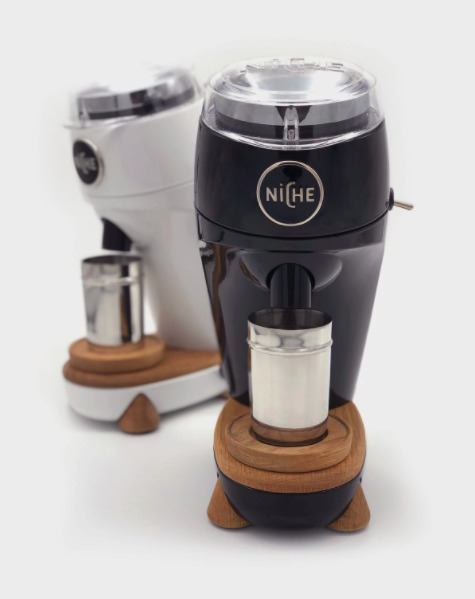
There are countless reviews of this grinder out there, the consensus among reviewers is that it produces more classical espresso with rich body. It can do filter but it seems to be an espresso focused grinder and produces a bit too much fines to do a very good job for pour overs.
The Niche is said to have lower clarity which is desired for more modern style of speciality coffee, but that does not mean the coffee it produces is bad in any means. This most likely is caused by its choice of conical burrs, which tend to produce a wider distribution of grind sizes compared to flat burrs.
This is completely a matter of preference. You may like the chocolaty rich bodies sweetness that the Niche produces, or you may prefer the acidity and clarity of flat burr grinders better.
Personally I really wanted to try out a flat burr grinder because I wanted to figure out which style of coffee I liked. I technically own a conical burr grinder (as my hand grinder) and since you pretty much cannot find a flat burr hand grinder.
Having said that, the Niche was still a very compelling option for me. This is since its main appeal is not the coffee it produces but its outstanding usability.
The reviews I came across were pretty much unanimous in that this is the best grinder in terms of workflow.
Workflow means many things but the Niche just gets the work done with out the user fussing over stuff. Its very low retention even without the need for a bellow, static is really not an issue, it’s quiet things like that make it the best choice for people looking for the easiest workflow.
The Niche has been out for years now, but it is so popular that to this day it is difficult to purchase.
And finally about the price point. The Niche is £499 = $575 USD at the time of writing this.
In addition to this, depending on where you live, 20% VAT may be required and shipping costs.
For me in Japan this could amount to like $780, and since the yen is very weak right now about 110000yen. That’s pretty pricy.
DF64
The biggest negative about the Niche for me its that it uses conical burrs as I mentioned.
This is the conical burr used in the Niche. (Pretty much all hand grinders use this type of burr.)

On the other hand flat burrs are like this.
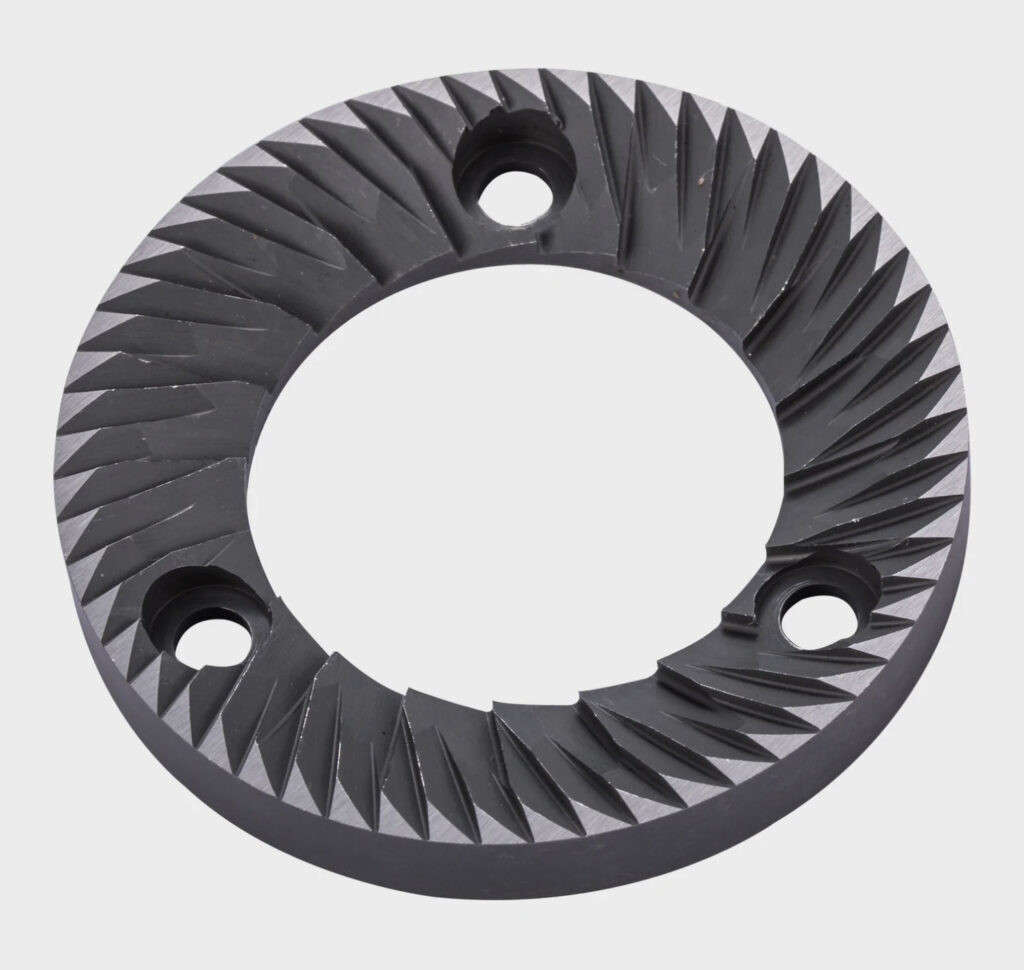
This is not universally true but in general, flat burrs tend to have a tighter distribution of grounds and are said to produce higher clarity. A lot of coffee enthusiasts say they prefer flat burrs.
I, having never used a flat burr grinder, do not know which I prefer, but I know that I want to try it out for myself.
And another note about flat burr grinders. They are pretty much never used for hand grinders. They require much higher RPM (rotations per minute) to function and therefore are not feasible for hand cranking.
So having gone on a detour about flat burrs, this brings us to the DF64. It is a flat burr grinder which is very budget friendly and is getting a lot of attention from the community.
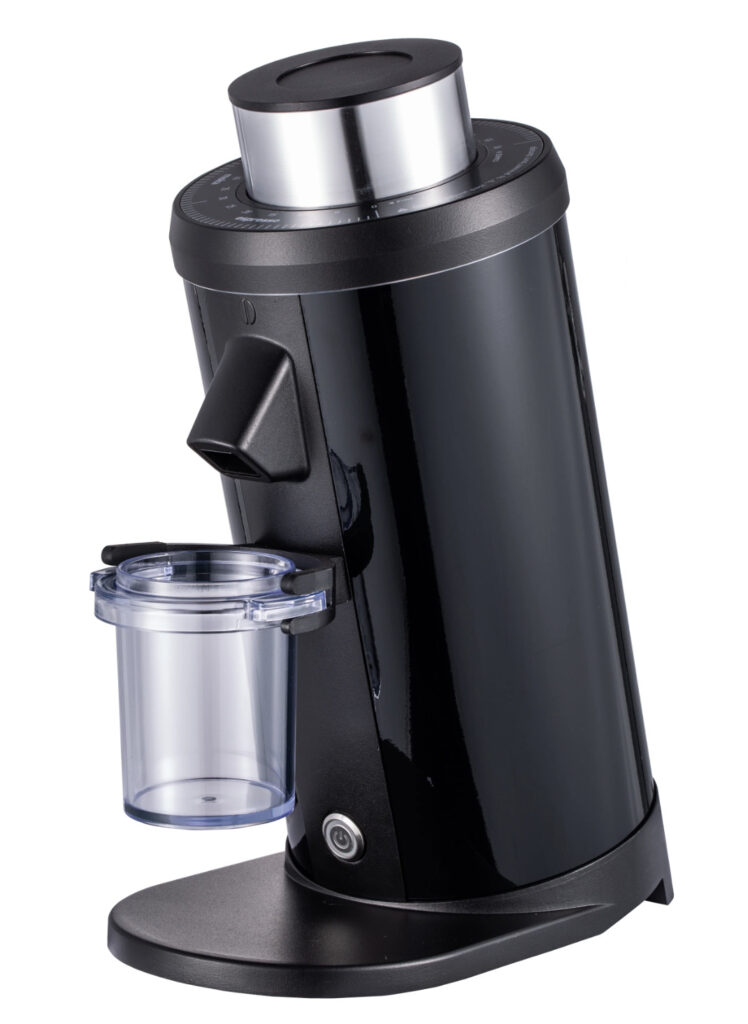
The DF64 is manufactured by a Chinese manufacturer which very few knew about until the DF64. Apparently the manufacture produces these grinders as and ODM so it is sold under various brands (Turin or G-IOTA) in different parts of the world.
And I must say the esthetic design of it is not its strong point, but I don’t think it looks too bad.
There are many reasons this grinder gained such popularity regardless of its disadvantage with its weak brand power.
The two key points have to be the fact that it uses 64mm flat burrs and its low price tag.
The 64mm burr size is a decently big flat burr which is even used in high-end grinders like the Lagom P64. It’s a commonly used size so there are many burr options for the DF64, including burrs from SSP which are often considered the best in the industry.
These SSP burrs are commonly used in the Lagom P64s, and so the DF64 can use the same burrs, and potentially come close in grind quality, as a grinder that is 4 times its price.
Of course having the same burr is not the end of the story. The burrs need to be spun consistently with very little deviation and with sufficient power. Both these points are considered with the DF64. It uses a huge motor, which takes up most of the space in side the grinder. The entire machine is made of metal and parts which matter for grind performance are well made.
You should not shy away from this grinder just because it’s made in China. A lot of great products are made in China, including the previously mentioned Niche Zero.
So are there no down sides to the DF64? Well unfortunately no, there are a few.
Wether you like the look of the machine is a personal opinion so I will leave that up to you to decide. (I personally am OK with it. It’s not the flashiest grinder but its not ugly) However I believe most would admit that the premium-ness is a place where the manufacture cut corners to produce it at low cost. The DF64 is not coated but instead it has a vinyl wrap. This does bump it down a bit in terms of the feel. But some might consider this as an opportunity to customize the look very easily.
The dosing cup that comes with it is made of plastic, where other grinders usually use metal ones. It looks a bit cheap, but there is an added benefit that you can easily see whats going on inside.
A common complaint is with the placement of the power button. It is located behind the dosing cup and it a bit hard to press.
Another complaint was with the difficulty in seeing which setting you are currently on because of the location of the indicator. But actually, the manufacture has heard these complaints and now added a dial indicator in the box.
Static is an issue that the user will have to manage. Flat burr grinders tend to have more static than conical ones, but even with that this grinder seems to suffer. Some RDT will improve the situation quite a bit.
Maybe as a means to mitigate the static issue, the DF64 comes with a declumper, which is like a screen/mesh that the grinds pass through before exiting the grinder. This declumper seems to be too strong at keeping the grounds in the machine which increase retention and promote regrinding of particals. The manufacturer has attempted improvements on this front as well, but it seem to be quite there yet.
So there were a good number of negatives which can be summarized as a difficult workflow and a slight lack in the premium feel.
The DF64 has high potential in terms of the cup quality, but the user has to take care in how he/she uses the grinder. Modding the grinder will almost be a necessity to use the DF64 at full potential. So in this sense, the DF64 is not a “plug and play”, and it is a very different grinder from the Niche.
But turning the argument around, this means that with some work from the user, the DF64 can be a very low cost and high performing grinder. Some 3D printing / modding can fix most of the issues.
So I wrote too much before we got here but the price of the DF64 from this website, which seems to be the manufacturers website, is $385 (apparently originally $600 but on always sale, as long as I can tell). Shipment to Japan is $60. This sums up to $445 almost half the price of the Niche!
By the way, the SSP burrs which I mentioned, can be bought together with the DF64. They give you and option to upgrade the burrs with the SSP multipurpose for $220. If you buy the SSP multipurpose burrs separately, they are $210. (I guess the extra $10 is the labor cost in replacing the burrs and aligning them)
Even with the SSP burrs, the DF64 comes out to $655, still significantly cheaper than the Niche.
Eureka Mignon Single Dose
The last grinder I considered was this one from Eureka, a very well known Italian grinder manufacturer. I was highly hyped as the “flat burr Niche”. Out of the three grinders mentioned, this one is the newest grinder.
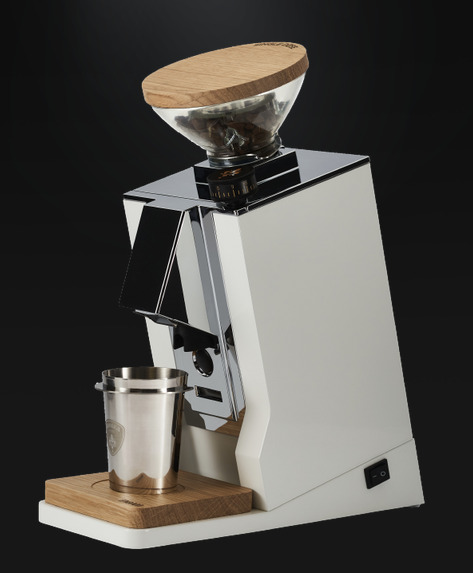
It has the flat burrs, desired by so many including me, and is made by a reputable manufacturer, so many hoped it would be the premium DF64 with better workflow. But when it came out, the reviews seem to be a bit let down. Maybe it was over-hyped, but a couple issues where pointed out in many reviews.
The motors vibrated so much, and some parts like the hopper shutter had sharp edges and were difficult to close.
These are minor issues, but I guess many expected better from Eureka (especially at it price point).
These minor issues were not deal breakers for me, but the following two things were.
First, the Eureka uses flat burrs, but it uses 65mm burrs made by Eureka. They do not fit the popular 64mm size. This closes upgrade options to so many burrs including SSP burrs. Of course the 65mm burrs by Eureka are not bad by all means, but they are not the best, and having less options is always not desirable.
Second deal breaker for me was the grind adjustment dial. Eureka uses their iconic micro adjustment dial. It’s a small knob at the to of the grinder, and it allows for very fine adjustments. This is good but, because of this fine adjustment, you need to make 4-5 full rotations of the dial to go between espresso and filter settings. On top of that you cannot read which rotation the setting is on at any given moment.
The Niche and DF64 have a large adjustment dial at the top and 1 rotation covers most of the usable range from espresso to filter. So you can easily check which setting is selected right now, without the need to remember what you did on the previous brew. (I actually have this issue with my hand grinder, I need to know which setting I used previously, or I always need to put it back to a home setting. It’s a small thing but bothers me a lot)
The appearance if the grinder is great. It clearly looks premium and again this is subjective but I think it looks much better than the DF64.
But this comes at a price. $799! That’s just the machine itself, so if I try to get it shipped to Japan, that would bump it up further.
This puts it as the most expensive of the 3 options.
It looks great, but that really doesn’t seem to justify the extra cost.
I decided to go with the Niche Zero. Then changed my mind.
So which one did I choose?
As you may have guessed from my comments, I was torn between the Niche or the DF64.
I decided to go with the Niche. It’s unwavering status as the most desired home grinder made me think that I can’t go wrong with it.
So I went to place an order for it and that’s when a lot of issues showed up.
I just could not figure out a way to buy it from Japan.
Niche does not send the machine to Japan directly. They send directly to a lot of parts of the world, but for some reason Japan is not one of them…
In that case what should I do? Well Niche does advise people in these situations to use a package forwarding service. They recommend Shop and Ship as an example, so naturally I went to them to sign up. But what do you know, they also don’t ship to Japan!
So I next found some other forwarding service. Forward2Me did send to Japan and seemed good, so I signed up. I finally got an UK address that I could order my Niche to.
Back to Niche’s site and I entered this UK address, and …. an error appears saying that they cannot ship to this address. They gave no reason for it.
At this point I just had enough of this non-sense, and decided to give up on the Niche.
By the way, Niche did have an official retailer in Japan a bit back. They even had a model of the Niche Zero with Japanese markings (which BTW looked kind of bad…). But at the time of writing this post, the retailer seems to have completely stopped selling the Niche Zero.
I suppose they did not sell too well in Japan, where the espresso population is very small. I guess they could not justify making custom Japan models which did not sell well, when there was so much demand on the normal model elsewhere.
Finally ended up ordering the DF64!
So I took a day and reconsidered. And started to think the DF64 might be a better match for me than the Niche.
The biggest reason was the 64mm flat burrs.
And the downside of the DF64 which was that users will need to mod the machine, actually probably wont bother me.
I own a 3D printer and design and make stuff myself (I designed my own WDT tool), so tinkering with the DF64 might actually even be fun.
At the end of the day, I cared more about the cup quality than the workflow.
Also I must confess that the price was a big factor as well. It’s so much cheaper. Even with the SSP burrs, it ends up much cheaper than the Niche.
It might have been a good thing that I couldn’t buy the Niche. haha
Anyway I ordered the DF64. I now have it, and will post more stuff about it in due time.
To those of you that read this loong essay, thank you so much for sticking with me to the end!
I hope it helped you in some small way.


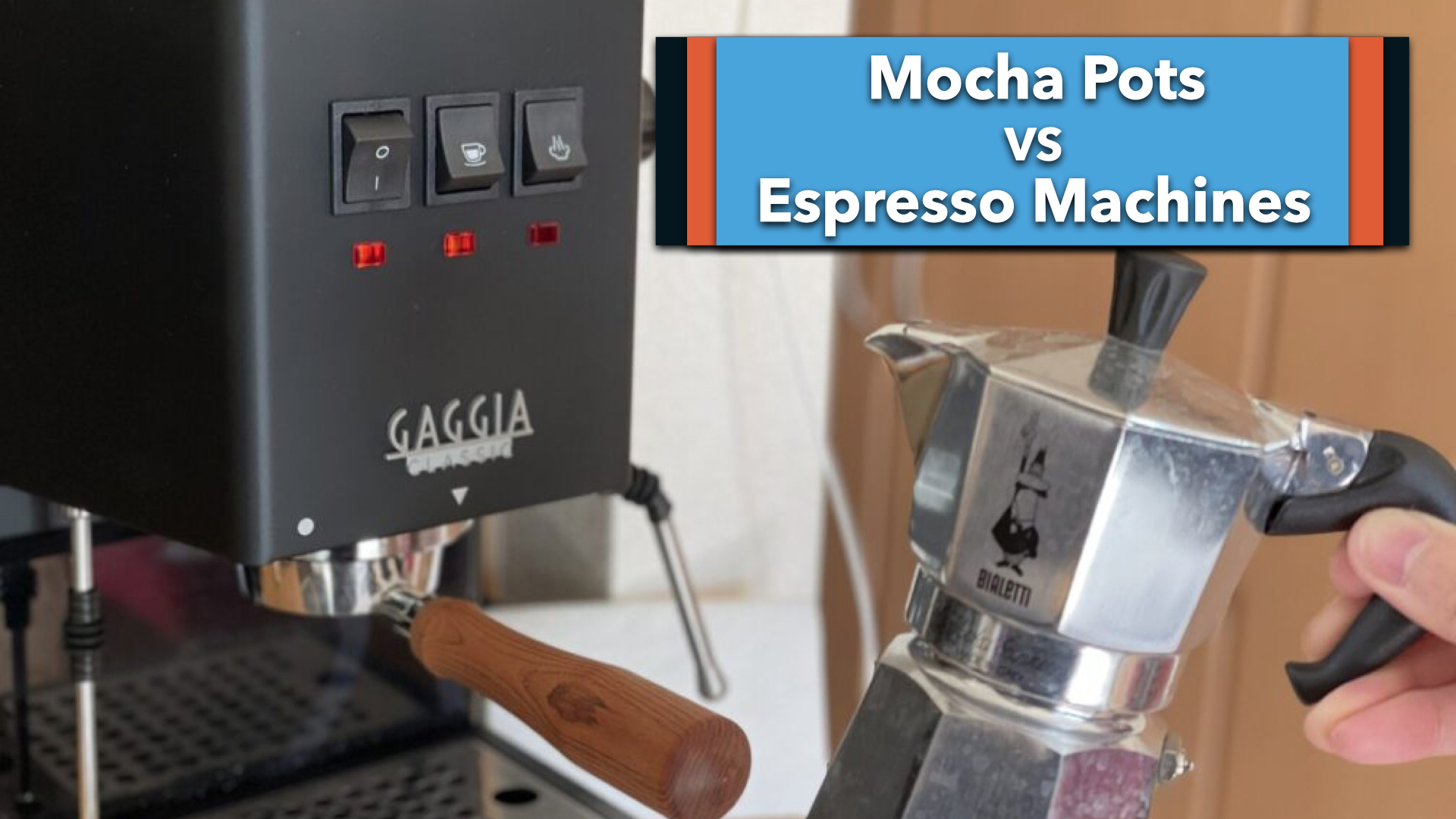
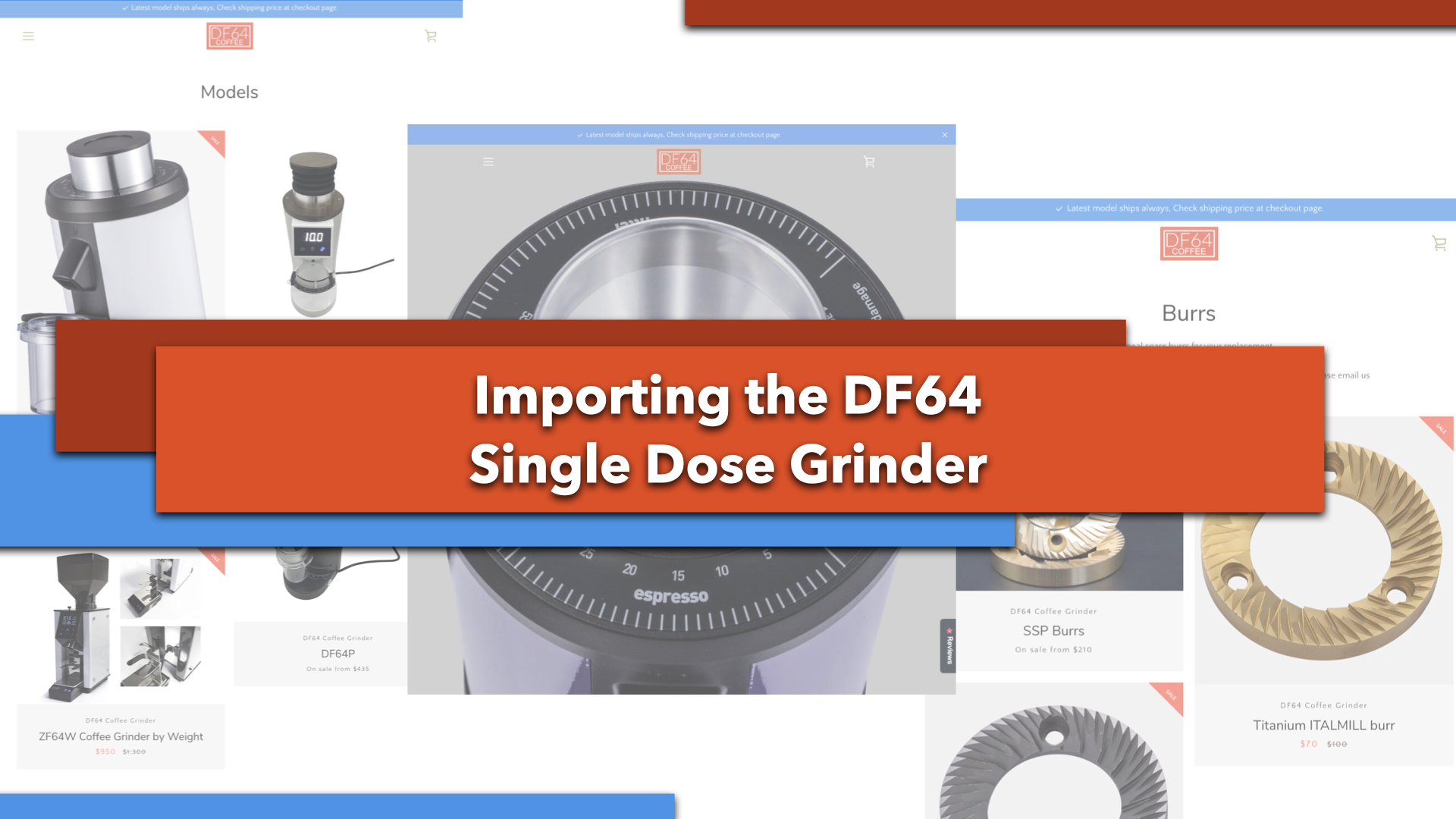
コメント